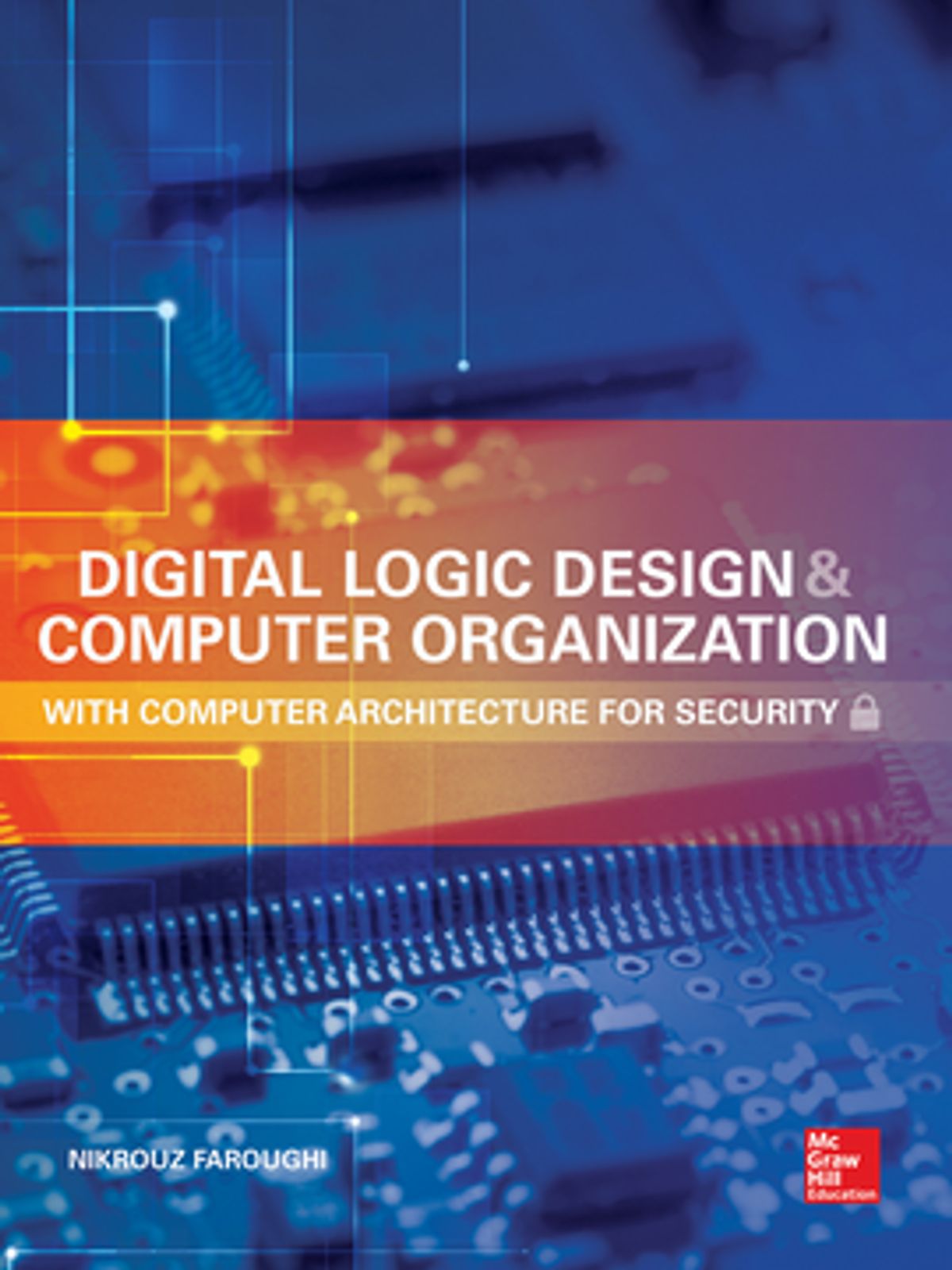Have you been searching for where to get Digital Logic Design and Computer Organization With Computer Architecture for Security PDF Download? Would you like to get Digital Logic Design and Computer Organization With Computer Architecture for Security PDF book? Have you lost all hopes of finding where you can get digital logic design and computer organization pdf? Well you just got to end of your endless search as digital logic design and computer organization with computer architecture for security book is just a click away!
Digital Logic Design and Computer Organization With Computer Architecture for Security PDF book is very good and will help you better understand the subject. At the end of chapters, there are great Verilog code examples as well as critical thinking questions. Overall, it is a great resource and will aid you in understanding logical circuit design.
Table of Contents
Digital Logic Design and Computer Organization With Computer Architecture for Security PDF eBook Details
- by Nikrouz Faroughi
- Release Date: September 8, 2014
- Imprint: McGraw-Hill Education
- ISBN: 9780071838085
- Language: English
- Download options: EPUB
- File Size: 30MB
Digital Logic Design and Computer Organization With Computer Architecture for Security PDF BOOK Synopsis
A COMPREHENSIVE GUIDE TO THE DESIGN & ORGANIZATION OF MODERN COMPUTING SYSTEMS
Digital Logic Design and Computer Organization with Computer Architecture for Security provides practicing engineers and students with a clear understanding of computer hardware technologies. The fundamentals of digital logic design as well as the use of the Verilog hardware description language are discussed. The book covers computer organization and architecture, modern design concepts, and computer security through hardware.
Techniques for designing both small and large combinational and sequential circuits are thoroughly explained. This detailed reference addresses memory technologies, CPU design and techniques to increase performance, microcomputer architecture, including “plug and play” device interface, and memory hierarchy. A chapter on security engineering methodology as it applies to computer architecture concludes the book. Sample problems, design examples, and detailed diagrams are provided throughout this practical resource.
Table Of Contents
- About the Author
- Preface
- Acknowledgment
- 1. Introduction
- 1.1 Introduction
- 1.2 Logic Design
- 1.3 Computer Organization
- 1.4 Computer Architecture
- 1.5 Computer Security
- 1.6 References
- 1.7 Exercises
- 2. Combinational Circuits: Small Designs
- 2.1 Introduction
- 2.2 Logic Expressions
- 2.3 Canonical Expression
- 2.4 Logic Minimization
- 2.5 Logic Minimization Algorithm
- 2.6 Circuit Timing Diagram
- 2.7 Other Gates
- 2.8 Design Examples
- 2.9 Implementation
- 2.10 Hardware Description Languages
- 2.11 References
- 2.12 Exercises
- 3. Combinational Circuits: Large Designs
- 3.1 Introduction
- 3.2 Arithmetic Functions
- 3.3 Adder
- 3.4 Subtractor
- 3.5 2’s Complement Adder/Subtractor
- 3.6 Arithmetic Logic Unit
- 3.7 Design Examples
- 3.8 Real Number Arithmetic
- 3.9 References
- 3.10 Exercises
- 4. Sequential Circuits: Core Modules
- 4.1 Introduction
- 4.2 SR Latch
- 4.3 D-Latch
- 4.4 Disadvantage of Latches
- 4.5 D Flip-Flop
- 4.6 Clock Frequency Estimation without Clock Skew
- 4.7 Flip-Flop with Enable
- 4.8 Other Flip-Flops
- 4.9 Hardware Description Language Models
- 4.10 References
- 4.11 Exercises
- 5. Sequential Circuits: Small Designs
- 5.1 Introduction
- 5.2 Introduction to FSM: Register Design
- 5.3 Finite State Machine Design
- 5.4 Counters
- 5.5 Fault-Tolerant Finite State Machine
- 5.6 Sequential Circuit Timing
- 5.7 Hardware Description Language Models
- 5.8 References
- 5.9 Exercises
- 6. Sequential Circuits: Large Designs
- 6.1 Introduction
- 6.2 Data Path Design
- 6.3 Control Unit Design Techniques
- 6.4 Energy and Power Consumption
- 6.5 Design Examples
- 6.6 References
- 6.7 Exercises
- .7 Memory
- 7.1 Introduction
- 7.2 Memory Technologies
- 7.3 Memory Cell Array
- 7.4 Memory Organization
- 7.5 Memory Timing
- 7.6 Memory Architecture
- 7.7 Design Example: Multiprocessor Memory Architecture
- 7.8 HDL Models
- 7.9 References
- 7.10 Exercises
- 8. Instruction Set Architecture
- 8.1 Introduction
- 8.2 Types of Instruction Set Architecture
- 8.3 Design Example
- 8.4 Advanced Processor Architectures
- 8.5 References
- 8.6 Exercises
- 9. Computer Architecture: Interconnection
- 9.1 Introduction
- 9.2 Memory Controller
- 9.3 I/O Peripheral Devices
- 9.4 Controlling and Interfacing I/O Devices
- 9.5 Data Transfer Mechanisms
- 9.6 Interrupts
- 9.7 Design Example: Interrupt Handling CPU
- 9.8 USB Host Controller Interface
- 9.9 References
- 9.10 Exercises
- 10. Memory System
- 10.1 Introduction
- 10.2 Cache Mapping
- 10.3 Cache Coherency
- 10.4 Virtual Memory
- 10.5 References
- 10.6 Exercises
- 11. Computer Architecture: Security
- 11.1 Introduction
- 11.2 Hardware Backdoor Attacks
- 11.3 Software/Physical Attacks
- 11.4 Trusted Computing Base
- 11.5 Cryptography
- 11.6 Hashing
- 11.7 Cryptography Hash
- 11.8 Storing Cryptography Keys through Hardware
- 11.9 Hash Tree
- 11.10 Secure Coprocessor Architecture
- 11.11 Secure Processor Architecture
- 11.12 Design Example: Secure Processor
- 11.13 Further Reading
- 11.14 References
- 11.15 Exercises
- A Bibliography
